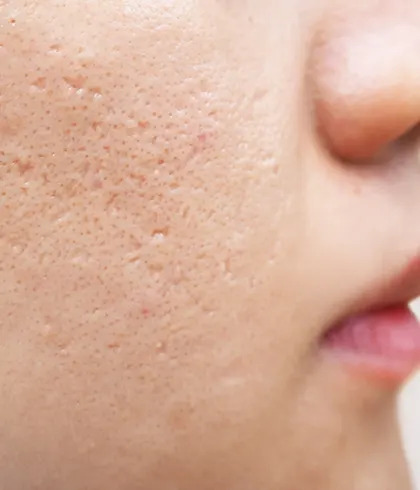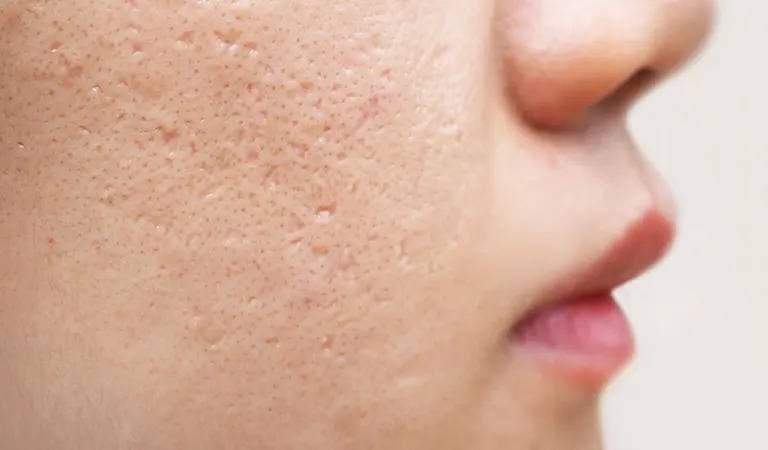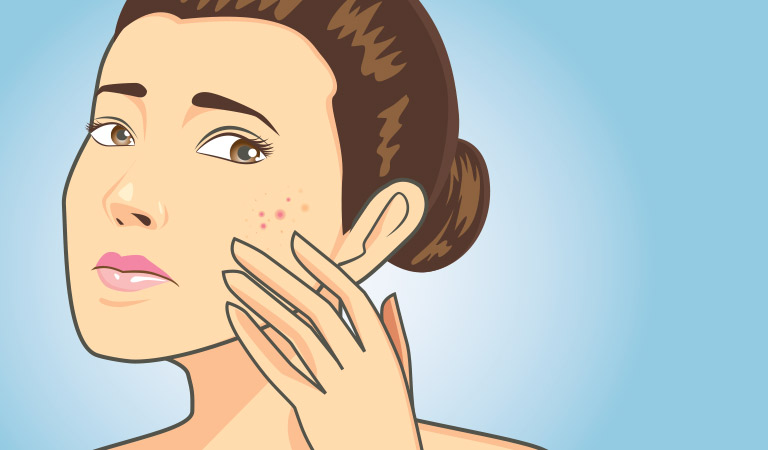

5 Types of Acne Scars: Everything You Need To Know
Anyone who has struggled with acne knows the frustration pimples bring. For some, it seems that no matter how much they wash their face, they just can’t make the bumps go away. You are not alone, if you are currently dealing with acne or have acne scars from a previous acne outbreak. Dealing with acne blemishes or acne scars can be isolating at times. Acne, and the long-lasting scars that emerge from it, can have a significant impact on your self-esteem and other aspects of your life.
In this blog, you will learn about the 5 types of acne scars and how to treat them naturally?
Types of Acne Scars
- Hyperpigmentation: These are the black spots that appear after your pimples have faded. It's technically skin darkening that arises after a period of significant skin inflammation, which is why it's also known as post-inflammatory hyperpigmentation.
- Keloid scars: Keloids are a sort of elevated scar that is more severe. They can send out elevated, lateral shoots that can spread much further than the wound itself and continue to develop long after the original wound has healed. Keloid scars are common on the jawline, chest, back, and shoulders. It is common in people with darker skin tones.
- Icepick scars: Ice pick scars are deep, narrow scars that go all the way to the tissue. The skin appears to have been penetrated by a sharp tool such as an ice pick. Ice pick scars look like the skin has been pierced and appear like narrow, deep holes that may resemble huge, open pores.
- Rolling scars: Rolling scars have varied depths and sloping borders, giving the appearance of wavy and uneven skin. These are the largest scars, with a diameter of up to 5 mm.
- Boxcar scars: Boxcar scars are large and box-shaped with highly defined borders. Acne, chickenpox, or varicella, a virus that causes a red, itchy rash with blisters are all causes of boxcar scars. Boxcar scars are especially common in places with thicker skin, such as the lower cheeks and jaw.
Also Read: Causes of Acne and Tips to get rid of them

Acne scarring: how prevalent is it?
Acne is a common skin condition that affects people across all age groups, particularly adolescents. According to the National Center for Biotechnology Information (NCBI), around 80% of individuals between the ages of 11 and 30 experience acne. Of these, 1 in 5 people are likely to develop some form of acne scarring, making it a widespread dermatological concern, especially among teenagers, who face a higher hormonal impact on skin health.
Why do some people get acne-scarred while others don’t?
Acne scars vary in appearance and severity depending on several clinical factors, including the type of acne, duration, and treatment approach. Mild acne typically causes small red bumps or pus-filled pimples and, if treated early, may not lead to scarring. On the other hand, cystic or nodular acne causes deeper lesions under the skin and has a much higher risk of permanent scarring.
Genetics, skin type, and personal habits also influence scarring. People with a family history of acne scars or those with oily skin are more prone to permanent marks. Importantly, manipulating pimples, popping, or squeezing can worsen inflammation, delay healing, and increase the likelihood of long-term scarring. Early consultation with a skin expert helps in effective scar prevention and management.
How to treat acne scars naturally?
To get rid of acne scars, first, stop touching your face with unwashed hands. Touching your acne might aggravate it as bacteria and germs on our hands can spread to our faces through contact.
Some natural remedies for acne scars are listed below.
- Apple cider vinegar: It can enhance your skin's pH balance and minimize the appearance of red scars. Use a cotton ball to apply a mixture of one part apple cider vinegar and two parts water to your scars every day.
- Baking soda: Baking soda can exfoliate dead skin cells from the skin. To make an exfoliating combination, combine one tablespoon baking soda with two teaspoons of water. Rinse with lukewarm water after gently applying to the damaged region.
- Shea butter: Shea butter has anti-inflammatory characteristics that aid in the reduction of bacterial development, which is the cause of acne. It also helps to fade discoloration and acne scarring.
Follow these guidelines to encourage acne's natural healing and prevent scarring.
- Overexposure to the sun can make scars darker and more noticeable. To avoid overexposure to the sun, use sunscreen with an SPF of 15 or higher.
- Excessive washing or scouring of the skin can cause dryness and damage.
- Picking at acne or popping pimples can cause scarring because bacteria in your nails or fingers can cause scarring.
- Drink plenty of water to remove toxins from your body and reduce the occurrence of acne breakouts.
Homeopathy for Acne Scar Treatment
If natural remedies for acne scars don't work, seek professional assistance. Homeopathic acne treatment is completely safe and has no negative effects. It aids in controlling acne causes as well as the prevention of recurrence. Homeopathic acne scar treatment is not the same as conventional acne treatment. Homeopathy addresses the underlying disorders which cause acne such as low immunity, PCOS, thyroid, nutritional inadequacies, allergies, stress, and others. In addition, homeopathic medicine strengthens your immune system and prepares your body to fight acne.
After a thorough case analysis that considers the patient's medical history as well as their physical and mental makeup, homeopathic medications are prescribed. Homeopathy can reduce acne breakouts over time and control scarring to the maximum. At Dr Batra's® a holistic approach is used to comprehend the individual's physical and emotional difficulties. Following that, the patient undergoes acne treatment that is specifically designed to the patient’s needs. Our expert homeopathic dermatologists combine expert skincare advice with a particular diet plan devised by nutritionists to treat different types of acne scars.
Key Takeaways
- Acne can make people feel alone and impact their self-esteem.
- Washing your face might not always prevent acne or scars.
- There are 5 types of acne scars that people commonly experience.
- The blog provides natural ways to treat different types of acne scars.
- Understanding your acne type can help you find the right treatment.
Also Read:Dos and Don’ts to get rid of Pimples
Also Read:How to treat cystic acne with homeopathy?
Also Read: Home remedies for acne scars overnight

